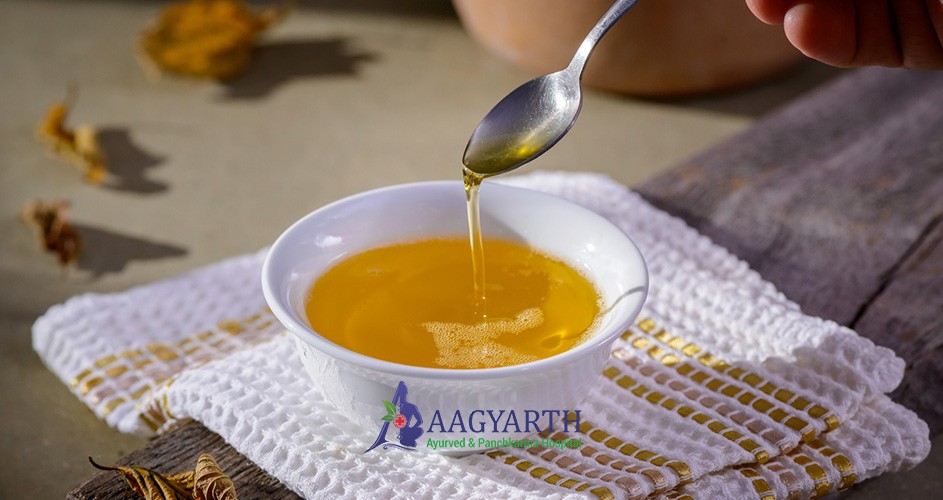For living the healthy life of human being, Ayurveda describe Three Upastambha – Ahara, Nidra, Anand.
Aahar plays an important role in day to day life. Food gives health benefits and provide nourishment to body.
And Ghrit is the essential part of indian diet since acient times, we can see the use of Ghrit in our Veda.
Use of Ghrit is varies form region and also individually.
Ghrit is comes under Sneha, substance which provides oleation to the body.
Ghrit is consider as SARVOTTAM among all sneha dravya.
When Ghrit processed properly, it contains extreme potency.
There is 8 types of Ghrit describe in samhitas, based on source of milk – Goghrit, Mahish, Aja, Avik, Hasti, Ustra, Vadav and Stri Grit.
Goghrit is describe as best among these all, as it has MEDHYA (Increases intellectual), and also RASAYAN.
Based on preparation Ghrit is of 2 types: Dugdh Nisrut Ghrit, Navaneet Nisrut Ghrit
Ghrit is enhances memory, intellectual, digestive fire, semen, ojas, Kapha, Meda vardhak
GUNA: Vata, Pitta, Kapha nashak
Rasa:
- Madhur
- Virya: Shit
- Vipaka: Madhur
- Karma
- Rochak
- Chaksusya
- Vrusya
- Agnivardhak
- Tridoshahara
- Balya
- Rasayan
After consumption of food, using ghrit destroys the diseases.
PURANA GHRIT:
- The Ghrit which is older than 1 years is consider as PURAN GHRIT.
- It has particular smell and also properties.
- It is very useful especially in epilepsy.
Roga:
- Mada
- Apasmar
- Murchchha
- Shosh
- Unmad
- Garadosha
- Jwara
- Yoniroga
- Karnarog
- Shirahashool
PRAPURAN GHRIT:
Ghrit which is older than 10 years is called PRAPURAN GHRIT.
KUMBHA SARPI:
- Ghrit older than 100 years is consider as Kumbh Sarpi.
- PURAN, PRAPURAN AND KUMBHA SARPI HAS PROPERTIES OF TRIDOSH SHAMAN.
